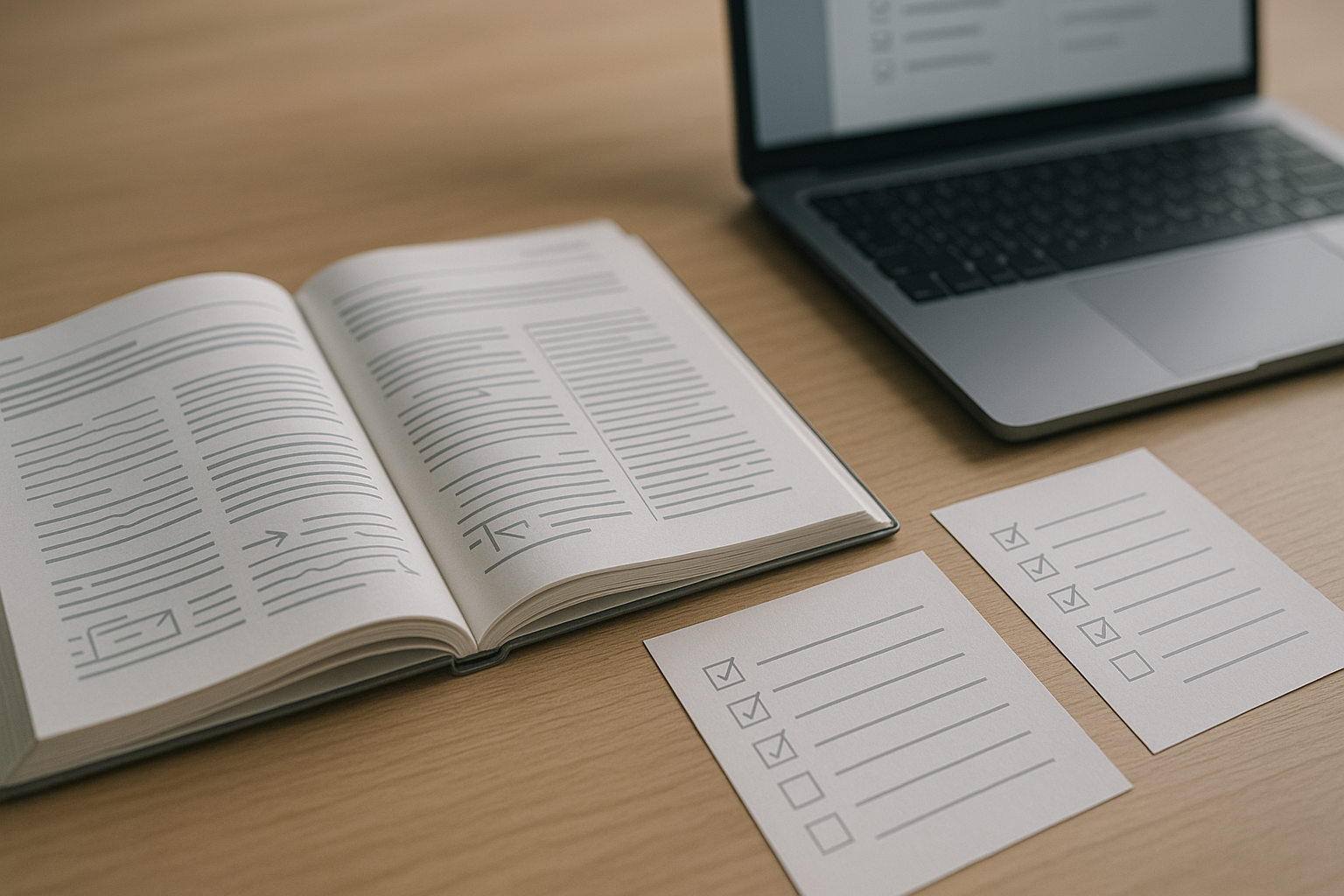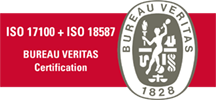ISO 17100 certified translation services: what they cover, how to verify, and when they matter
ISO 17100 certified translation services align people, process, and quality checks so your content is right the first time. Here’s how the standard works and what to ask providers.

Table of Contents
What ISO 17100 certified translation services include
ISO 17100 is a requirements standard for professional translation services. It defines the core workflow (pre-production, production, and post-production), mandatory competencies, and an independent revision step by a second linguist. In practice, that means clear specifications, qualified native-level translators, full review, and documented checks before delivery. (iso.org)
Under ISO 17100, tasks and responsibilities are explicit: project preparation and terminology, translation, bilingual revision, final verification, and delivery. Each phase has inputs/outputs and record-keeping so quality isn’t left to chance. That structure is what sets ISO 17100 certified translation services apart from ad-hoc “translate and send” workflows. (iso.org)
How ISO 17100 certified translation services are evolving
Standards aren’t static. ISO has initiated a revision of ISO 17100 (listed as ISO/AWI 17100) to reflect changes in tools, expectations, and adjacent standards like ISO 18587 (MT post-editing). Industry bodies have been flagging this update through 2025, so it’s worth confirming a provider’s current certificate and scope. (iso.org)
How ISO 17100 differs from “certified” or “sworn” translations
The phrases sound similar, but they’re different things. ISO 17100 is a quality management standard for how a translation service provider works. A “certified” or “sworn” translation, by contrast, is a document accompanied by a formal declaration (and, in some countries, performed by sworn translators) so the text has legal standing. Many projects require both: an ISO-managed process to produce the translation, plus a legal certification for the target jurisdiction. (m21global.com)
If you need official documents accepted by authorities, you may require a sworn/certified translation; if you need consistent, publishable quality at scale, you want ISO 17100 certified translation services. For critical matters (legal, financial, safety), both apply: produce under ISO 17100, then legalize the result according to the destination country’s rules. (iso.org)
Who does the work: roles, qualifications, and training
ISO 17100 specifies competence requirements for translators, revisers, and reviewers (education, experience, and specialization). It also formalizes the independent bilingual revision step—someone other than the translator compares source and target end-to-end. That separation of duties is a key quality gate. (iso.org)
At M21Global, that competence is reinforced by ongoing development—specialized translators, continuous skills updates, and native-language reviewers. If you care about domain accuracy (e.g., legal), browse our dedicated pages on Legal Translation and Ongoing Training to see how we keep teams sharp and aligned with sector terminology.
Quality control, continuous improvement, and tools
A robust process is only as strong as its checks. ISO 17100 calls for documented verification before delivery, but a mature provider layers additional QA: terminology management, automated consistency checks, and human spot-audits on top of the bilingual revision. Our Quality Control process runs in three phases (during translation, after translation, and after proofreading), with clear criteria and metrics. (m21global.com)
Quality shouldn’t stall innovation. Our Continuous Improvement program captures client feedback and project learnings, and channels them into playbooks and glossaries—so each new job benefits from the last. And because many projects ultimately require official delivery, our Certified Translations service handles notarial/solicitor certification and logistics end-to-end.
How to verify a provider (and spot red flags)
- Check the certificate. Ask for a current ISO 17100 certificate showing the provider name, scope (“Translation services”), and the certification body. Confirm dates and validity. ISO 17100 has an amendment (2017), and a new revision is in the works—up-to-date certificates matter. (iso.org)
- Confirm the auditor. Recognized bodies (e.g., Bureau Veritas) audit against the standard. Reputable providers can name the auditor and share a sample certificate on request. (group.bureauveritas.com)
- Ask about workflow and roles. There must be independent revision by a second linguist—if that step is “optional,” it’s not ISO 17100-conformant. (iso.org)
- Look for evidence. Style guides, glossaries, sample with tracked changes, and a clear escalation route show the system is real, not just a badge.
For quick context on deliverables and coverage, see our Translation Services overview and “We translate the world” approach to scale and consistency across languages.
When to insist on ISO 17100 — and when you may not need it
Insist on ISO 17100 when your text affects legal exposure, revenue, safety, or brand reputation—think contracts, HR policies, T&Cs, financial statements, medical or technical content. The managed workflow reduces risk and adds traceability.
For internal notes or exploratory content, you might choose a lighter workflow. If you’re unsure, ask us to recommend the right service tier. Wherever you land, you can still request bilingual revision or additional QA when stakes rise. For projects that also need official acceptance, combine ISO 17100 production with our Certified Translations service to handle the legal formalities.
Prefer to jump straight in? Request ISO 17100 certified translation services via our Translation Services page and we’ll scope the right workflow for your goals.
FAQ
Q1. Is ISO 17100 the same as a “certified” or “sworn” translation?
No. ISO 17100 is a service standard—about how a provider organizes people, roles, and quality checks to deliver consistent results. It mandates competencies and independent revision by a second linguist, plus documented verification before delivery. You’d select ISO 17100 when you want predictable quality, auditability, and accountability across projects and languages. (iso.org)
A certified or sworn translation is about the document itself carrying legal weight. Depending on the country, it may require a sworn translator or a translator’s declaration notarized by a solicitor or notary. Many official documents (e.g., birth certificates, court records) need this formality to be accepted by authorities. If you need both quality control and legal acceptance, produce under ISO 17100 and then add the appropriate certification step for the destination country. (m21global.com)
Q2. How can I verify that a provider is truly ISO 17100-certified?
Ask for a copy of the certificate and check four things: the company name, the standard (“ISO 17100:2015”), the scope (translation services), and the validity dates. Confirm the certification body (e.g., Bureau Veritas) and, if in doubt, contact them to validate the certificate number. Reputable providers are transparent and will gladly share this. Also ask what’s included in scope—languages, locations, or service lines—so you know the audited process matches your needs today. (iso.org)
Because ISO is revising the standard (work item active in 2025), ensure your provider stays current. Certificates aren’t “set and forget”; they’re periodically assessed. If a vendor can’t provide documentation or dodges questions about independent revision or auditor details, treat that as a red flag. (iso.org)
Q3. Where do ISO 17100 and ISO 18587 (MT post-editing) fit together?
ISO 17100 focuses on human translation with independent revision. ISO 18587 covers the post-editing of machine translation output. You can combine them: for low-risk, high-volume content, MTPE (governed by ISO 18587) may be appropriate, while still applying 17100-style controls around specifications, terminology, and verification. The key is risk: for brand-critical or legally exposed content, stick to full ISO 17100 production with human bilingual revision by a second linguist. (The Association of Translation Companies)
When evaluating providers, ask which workflows they propose for your use case, and whether bilingual revision is included. A trustworthy team will explain trade-offs, show examples with tracked changes, and recommend when to escalate to full human translation under ISO 17100.
Q4. Does ISO 17100 make translations slower or more expensive?
It adds structured steps (spec, translation, revision, verification), so the process is more deliberate than a one-pass translation. However, that discipline prevents rework and downstream risk—especially on documents with legal or financial consequences. Many organizations discover ISO 17100 saves time overall because errors are caught earlier and terminology is consistent across releases. (iso.org)
Costs depend on scope and risk. For internal drafts or exploratory analysis, a lighter workflow may be fine. For public-facing content, legal texts, or safety-critical material, ISO 17100 is an investment in reliability. We’ll help you choose the right service level and, if needed, combine it with our Certified Translations for formal acceptance.
Links
- Internal:
- External:

